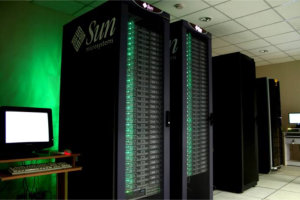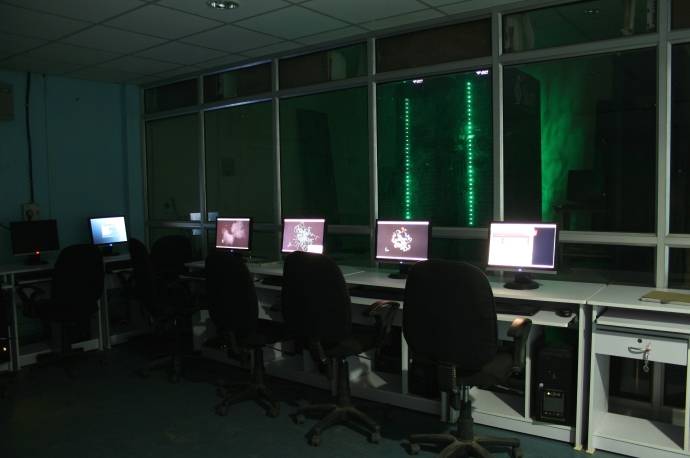The University High Performance Computing Facility at Hall No.7, in the School of Information Technology, was funded from the UGC UPOE program, and envisaged as an important tool to enable us to raise the level of our research to remain academically competitive, especially for research problems which involved large data sets, and numerical calculations. The facility has recently been upgraded with a 256-processor Sun cluster. The HPCF Centre is conceived of as a functionally distributed supercomputing environment, housing leading-edge computing systems, with sophisticated software packages, and connected by a powerful high-speed fibre-optic network. The computing facilities are connected to the campus LAN, WLAN and also to the Internet. UPOE HPC Cluster has been installed and maintained by C-DAC. Its peak performance is 1.3 Teraflops and the technology which is used to build this cluster is ROCKS version 5.2 and the scheduler used is Sun Grid Engine, by using this scheduler we can manage the user applications and we can implement the policies, it is a very powerful tool. In order to provide the low latency we have used the separate switches for MPI, Storage and IPMI. In this UPOE cluster we have attached the storage model: storagetek 5220And the total avail storage is 4TB.

Brief Architectural information:
- Processor : AMD OPETRON 2218 DUAL CORE DUAL SOCKET
- NO. of Master Nodes : 1
- NO. of Computing Nodes : 64
- Operating System : CENT OS 5.3
- CLUSTER Software : ROCKS version 5.2
- SERVER Model : SUNFIRE X4200 (1 NO)
- Compute Node Model : SUNFIRE X2200 (64 NO)
- NAS Appliance Model : Storage tek 5220
- Total Peak Performance : 1.3 T. F
Calculation procedure for peak performance:
- No of nodes 64
- Memory RAM 4 GB
- Hard Disk Capacity/each node : 250GB
- Storage Cap. 4 TB
- No .of processors and cores: 2 X 2 = 4(dual core + dual socket)
- CPU speed : 2.6 GHz
- No. of floating point operations per seconds for AMD processor: 2 (since it is a dual core)
- Total peak performance : No of nodes X No .of processors and cores X Cpu speed X No of floating point operations per second = 64 X 4 X 2.6GHz X 2 = 1.33 TF
Softwares used in UPOE cluster:
- Ganglia : monitoring tool
- PVM : parallel virtual machine
- HPC software : High performance LINPAC (performance testing tool )
- Software's used in HPC cluster
- R, Amber + Q.C tools,CID in RNA, GRID, GOLPE, ALMOND, MOKA, VOLSURF, METASITE, HMMER, INFERNAL, BLAST, MATLAB, GNUPLOT, TEIRESIAS, OPENEYE, ADF, AUTODOCK, GROMACS etc.,
- Cluster Services: 411Secure Information Service :The 411 Secure Information Service provides NIS-like functionality for Rocks clusters.
- Scheduler used:
- Sun Grid Engine: Job scheduler software tool, in this we have already implemented the fair share policy i.e. all users can get equal priority, using this we can submit batch and parallel jobs
Application softwares and compilers:
- Open MPI Lam MPI
- C, C++, FORTRAN compilers (both GNU AND INTEL)
- Bio roll: for Bio-Chemical applications
